Over Feeding
Since fish are cold blooded (poikilothermic), they do not require a lot of energy and food to survive compared to mammals. Overfeeding your fish can lead to problems. It leads to excess waste which will cause the biological load on the filtration system will become overworked. Continued overload can lead to the disruption of the nitrogen cycle and bacteria rich, poor quality water. Bacteria will produce toxins which can kill fish. The poor water quality will take a toll on the health of the fish.
If one feeds juvenile fish at 6% of their body weight per day the fish grow very rapidly. But they get fatty livers. Commercial fish farms feed at 6% because they have to in order to turn a profit. I recommend feeding juvenile fish at half this level in order to prevent diseases. But the composition of the food has little bearing on the fatty liver issue unless one gets over 15% fat in the food.
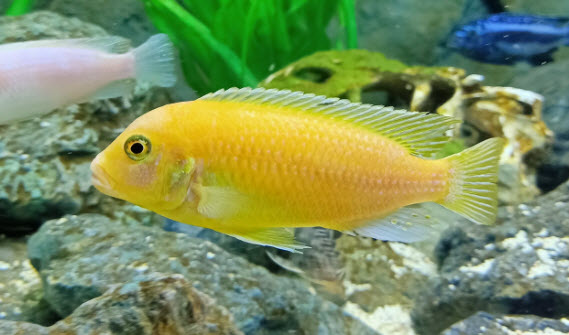
Amount of Food Recommended
Experts recommend feeding adult aquarium fish 0.5 to 2% of the total bodyweight of fish in the aquarium per day in dry flake or pellet commercial food. For juveniles it goes to 2% to 5% by body weight. I like to keep my fish on the low side of these recommendations as I think it gives a healthier fish. The high side of these recommendations is for feeding fish like tilapia to get them to market as fast as possible. I’m not raising food fish. But note this is only my OPINION.
Think about it. A 100-pound (45 kg) human may consume 2 to 3 pounds (0,9 to 1,4 kg) of 50% hydrated food per day. That works out to 1% to 1.5% by dry weight for a human, a warm-blooded animal. For a cold-blooded fish to eat 1% by dry weight is very reasonable.
Another way to look at it is based on calories. A 100-pound (45 kg) person requires about 2,000 calories per day. Typically, the dry weight of most foods has roughly 5 calories per gram. That’s 400 grams of dry weight food per 100 pounds (45 kg), or a little less than 1% of the body weight in dry food. 400 grams of dry weight food is a little less than two pounds (0,9 kg) of 50% water food. This confirms the human math. So, 1% is reasonable for a cold-blooded fish.
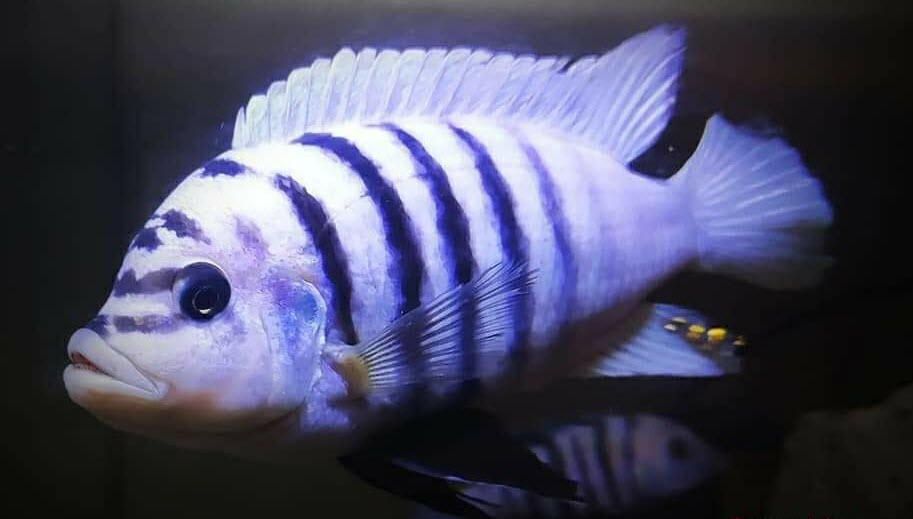
Food Versus Growth Rate
Fish grow differently than humans and mammals. They grow in direct proportion to their diet. Some species of juvenile fish fed 4% of its weight every day will simply grow twice as fast as a fish which gets 2% of its weight in food every day. The first fish might reach its adult size in two years while the second fish will take four years. Both fishes will reach the same adult size. This is a very difficult concept for humans to wrap their heads around.
But the fish fed the higher amount of food will typically not be as healthy as the fish fed the lower amount of food for a host of reasons having to do with bacteria load in the water. So we do not recommend feeding at a high rate. Also note that some slow growing fish species simply do not eat a lot of food, even if it is present in the aquarium. This includes fish like the clown loach.
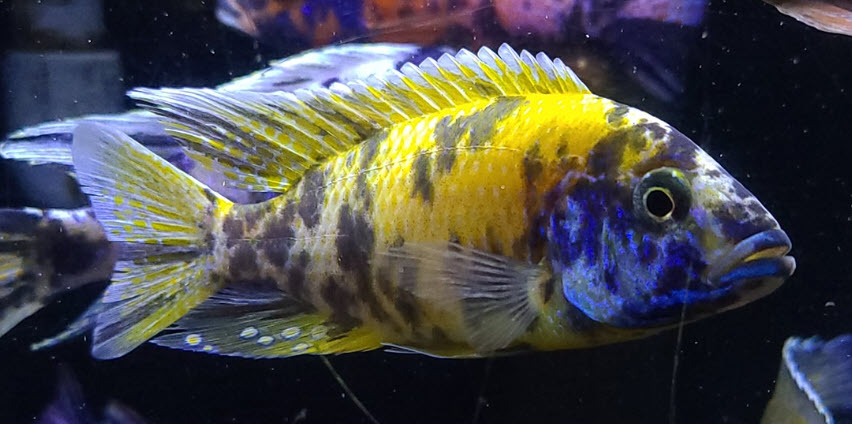
Simple Calculations
One difficult to understand topic is the amount of fish food to add. The guidelines are 2% to 5% of the fish’s weight daily in dry food if the fish is a juvenile, and 0.5% to 2% of the fish’s weight daily if the fish is an adult, with considerable latitude. Of course, the key question is how much does a fish weigh?
It turns out that that to get a weight for calculating the amount of food one then has to ask, “how active is my fish?” Small fish constantly swim around the tank while large fish tend to “hang out” without swimming. This “metabolism factor” is exceptionally large, a small one-inch (2,5 cm) fish typically will burn, pound for pound, three times the calories of a large ten-inch (25 cm) fish. Research data on a lot of fish says there is a sharp decrease in metabolism as one increases from six to nine inches (15 to 22,5 cm) in total length (body plus tail).
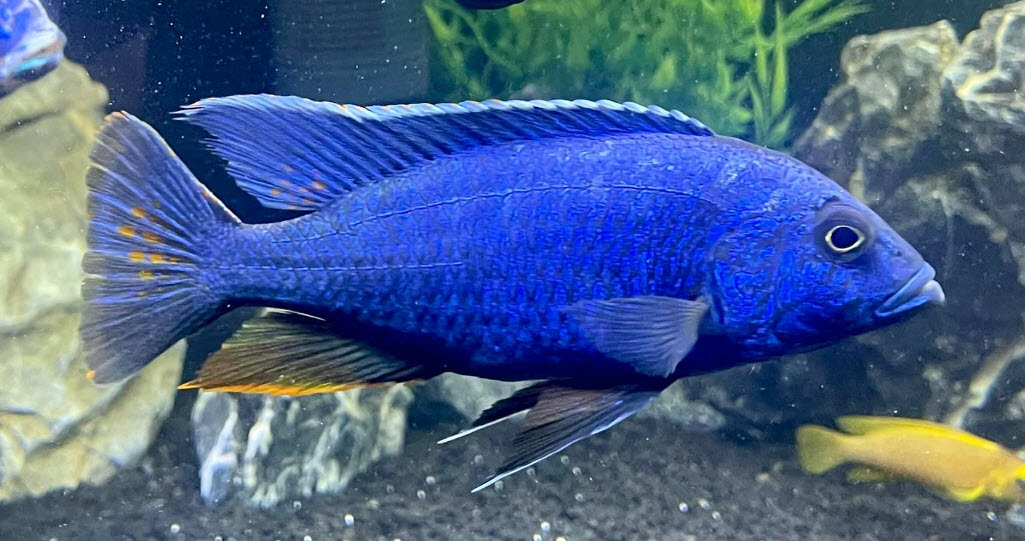
In order to calculate the “metabolic weight” of a fish, a scientific article was required. The paper “Length-weight Relationship of Nigerian Freshwater Fishes”, Richard King, 1996, gave the weight factors for 73 tropical freshwater fish populations ranging in length from 1.5 cm to 22.5 cm. This give the following:
| Length Inches | Length Centimeter | Weight Grams | Metabolic Weight Grams |
|---|---|---|---|
| 1 | 2.54 | 0.32 | 1 |
| 1.25 | 3,18 | 9.64 | 2 |
| 1.5 | 3.81 | 1.1 | 3 |
| 1.75 | 4,44 | 1.8 | 5 |
| 2 | 5.08 | 2.5 | 7 |
| 2.25 | 5,72 | 3.73 | 10 |
| 2.5 | 6.35 | 5.12 | 14 |
| 2.75 | 6,98 | 6.81 | 18 |
| 3 | 7.62 | 8.86 | 22 |
| 4 | 10.16 | 21 | 47 |
| 5 | 12.7 | 41 | 82 |
| 6 | 15.24 | 70.5 | 113 |
| 7 | 17.78 | 112 | 140 |
| 8 | 20.32 | 167 | 167 |
| 9 | 22.86 | 239 | 239 |
| 10 | 25.4 | 328 | 328 |
| 12 | 30.48 | 581 | 581 |
It turns out that small fish can metabolize up to three times pound for pound that a large fish will metabolize as small fish are constantly rapidly moving. The “metabolic” weight reflects that difference.
Note that these numbers are extremely rough. A wide bodied fish like plecostomas or a goldfish can be easily twice this weight while some fish like the giant danio are very streamlined and probably half this weight. And of course a long finned fish like a veil tail angelfish has to be adjusted in length to what a regular angelfish of that size would measure in length.
This relationship is delved into in much more depth in this article:
13.2. Calculating Stocking Ratio
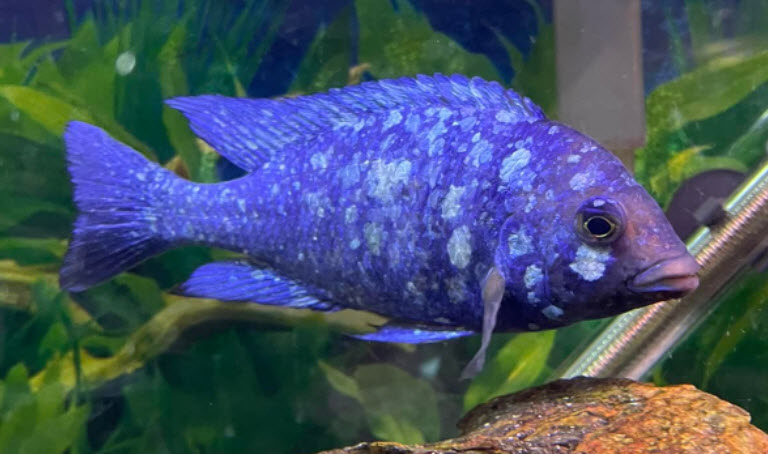
To determine how much to feed one’s adult fish simply multiply each category by the number of fishes in that category, then add the results, and multiply that number by 0.005 to 0.015. If it is juvenile fishes, multiply by 0.02 to 0.05. This gives the amount of dry food (flakes pellets or wafers) to feed.
Note that fish food is relatively lightweight. A level tablespoon of pelleted food is roughly five grams of food. A level teaspoon of pelleted food is 1.5 grams of food.
The author uses 1% for adult fish and 2% for juvenile fish as more food means more waste and more problems with both nitrates and bacteria. If the fish start getting hollow bellies up the amount of food.
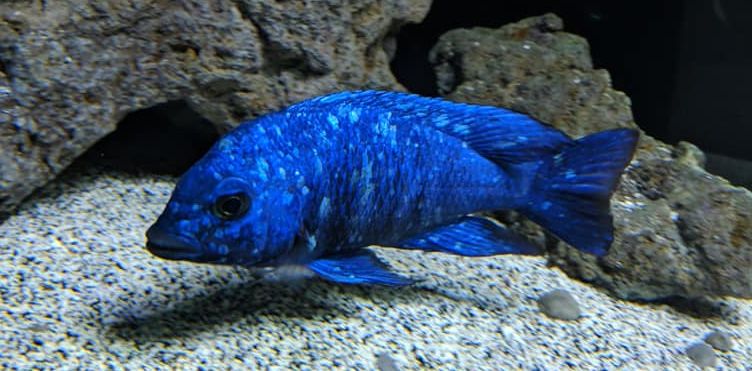
Food Amount Calculations
This is the level of dry food needed per day for each size of aquarium by stocking:
| Aquarium size | Aquarium size | Light stocking | Moderate stocking | Heavy stocking |
|---|---|---|---|---|
| 10 gallons | 38 liters | 0.07 grams | 0.2 grams | 0.7 grams |
| 20 gallons | 76 liters | 0.14 grams | 0.4 grams | 1.5 grams |
| 40 gallons | 151 liters | 0.28 grams | 0.8 grams | 3 grams |
| 80 gallons | 303 liters | 0.55 grams | 1.6 grams | 5.5 grams |
| 100 gallons | 379 liters | 0.7 grams | 2 grams | 7 grams |
| Amount of dry food per day | ||||
This is a very small amount of food! Weigh it to be accurate. It may require making several small piles on the scale to get the proper amount of dry food for most kitchen scales (0.07 grams per day needs twenty small piles that weigh 1.4 grams total). Note that pelleted and flake food can vary a huge amount in their densities so they can vary considerably in the weight per given volume.
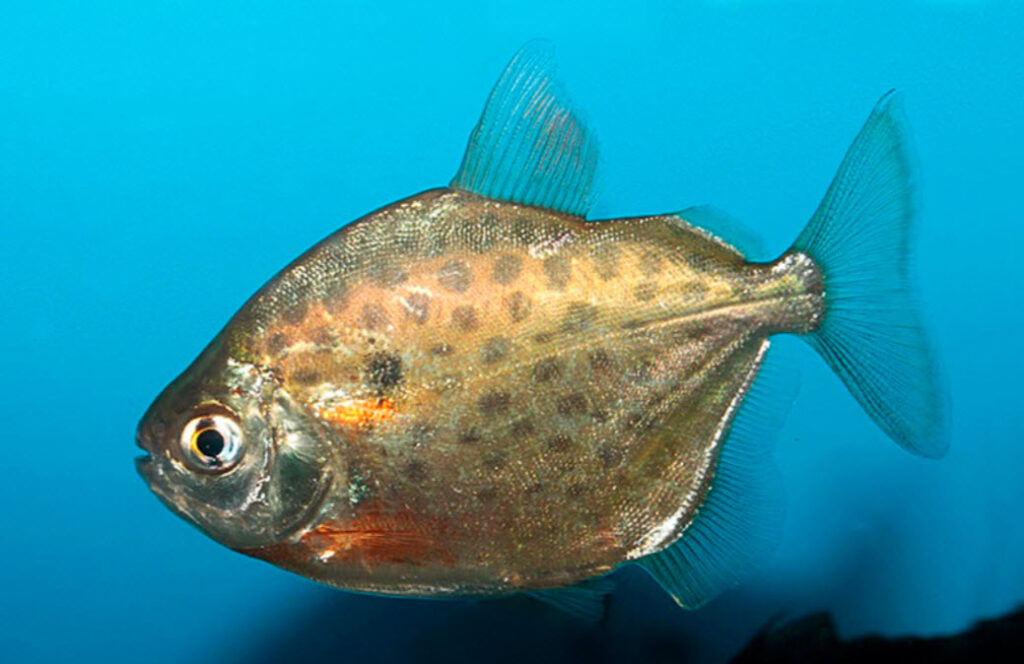
Light stocking of a 100-gallon (379 liter) aquarium would require four grams or a two third teaspoon of frozen or fresh food per day. Medium stocking would need about 12 grams or 2 level teaspoons of frozen or fresh food per day. Heavy stocking of a 100 gallon (379 liter) aquarium needs 36 grams or six-level teaspoons of frozen or fresh food per day.
Obviously a 50-gallon (189 liter) aquarium would drop these amounts by 50% and a 25-gallon (94,6 liter) aquarium would reduce the amounts by 75%. So, a moderately stocked 25-gallon (94,6 liter) aquarium would need just a small amount of food per day, on the order of 1/2 of a teaspoon of fresh or frozen food. This is a very gross generalization. It is much more accurate to calculate the weight of the fish in grams and go by weight.
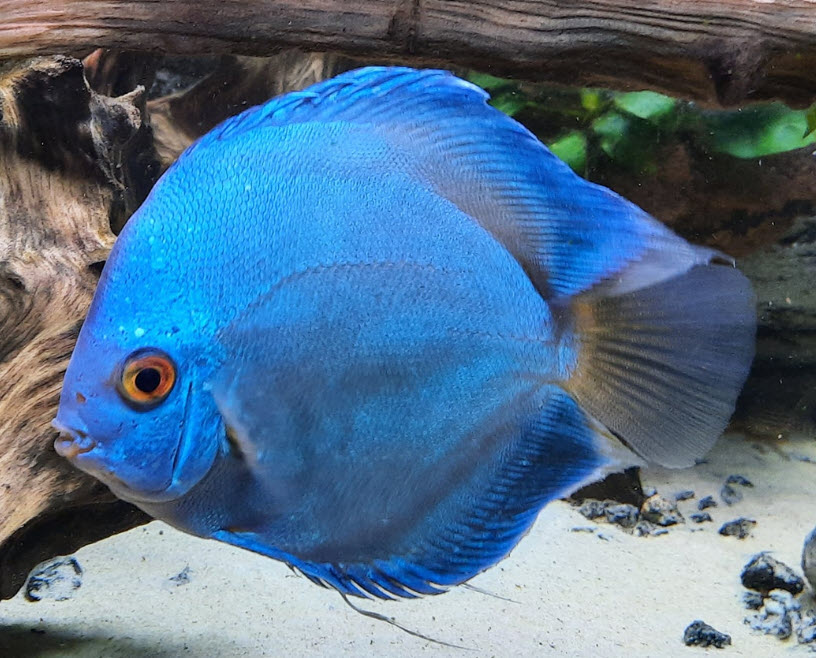
There are a bunch of “rules” about food and time. “feed your fish only what they can eat in one minute”, “feed your fish only what they can eat in five minutes”. I’ve kept big Oscars. The amount of food they can eat in five minutes would feed my dog.
There is a great video on YouTube of a gulper catfish in an aquarium with a koi that was almost as big as the catfish. The catfish ate the koi, downing him almost completely in the flash of an eye. The stomach of a fish is very extensible, and a fish can eat a great deal in a short period of time.
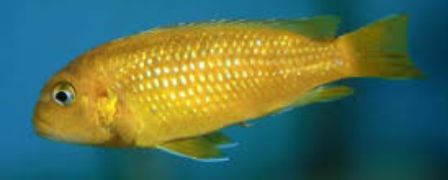
Underfeeding
Very rarely one finds someone going the opposite way and under feeding. If your fish have thin hollow bellies look at the amount of food. If it is very low amount or you often forget to feed the fish, start feeding them more food. Fish that are starved will develop diseases and die. Note that the most common disease in the hobby is “wasting disease” (environmental mycobacteriosis or “Fish TB”). This also causes thin bellies. So caution is advised here.
Vacation Feeding
When you go on vacation for a few weeks please don’t have the neighbor kid from next door feed your fish. They will invariably overfeed the fish and you could return to a disaster. Automatic fish feeders have been known to fail and kill whole aquariums of fish. Cold blooded animals like fish, amphibians or reptiles can easily go for weeks, even months without eating at all.
An adult fish will typically add body mass when it is well fed constantly, then just drop slightly in weight when starved for a while. I’ve left my fish without food for weeks many times with no ill effects. Note that growing fry and small juveniles are probably a different story. I would be hesitant to leave such fish without food for much more than three days.
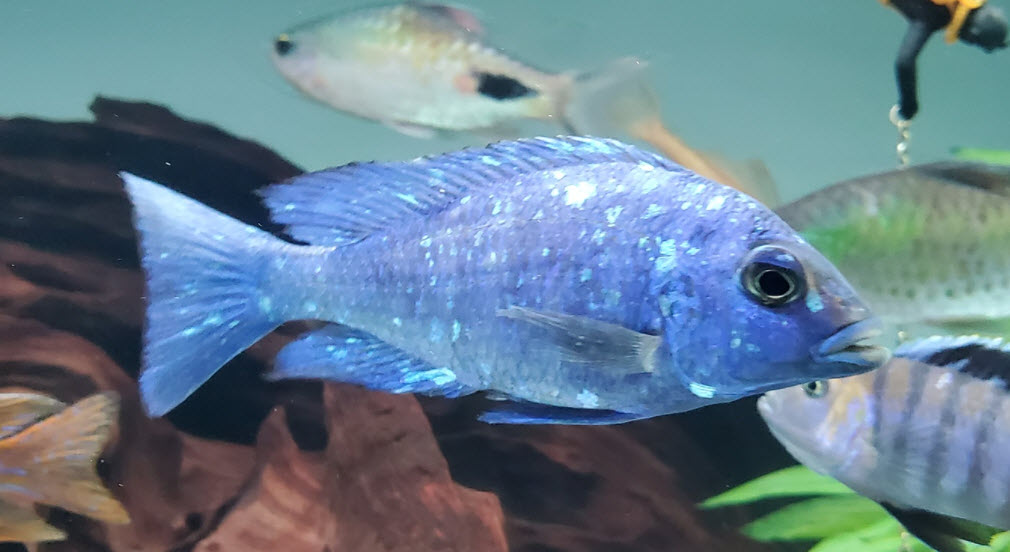
Getting Complicated
There are some among us that like to get very complicated with things. If you are one of these hobbyists you can get very complicated. If you take the size of the fish with the fins (“total length”) in centimeters (2.5 centimeters in an inch) one can calculate the weight very easily.
Using centimeters plug into the following equation:
- W = 0.02 L3
This formula is weight in grams equals 0.02 times the length in centimeters cubed. Now this formula is very rough and thus inaccurate for some fish. This formula is accurate for a tilapia per the literature. A ten centimeter (four inch) tilapia is thus 21 grams. A tilapia moves moderately fast at four inches so it probably needs a metabolic factor of 2.2, which gives a weight for food purposes of 47 grams.
For trout, per the literature, the formula becomes:
- W = 0.036 L2.7
A ten centimeter (four inch) trout is thus 18 grams. A trout moves very fast and probably needs a metabolic factor of three, making its weight for feeding purposes 54 grams.
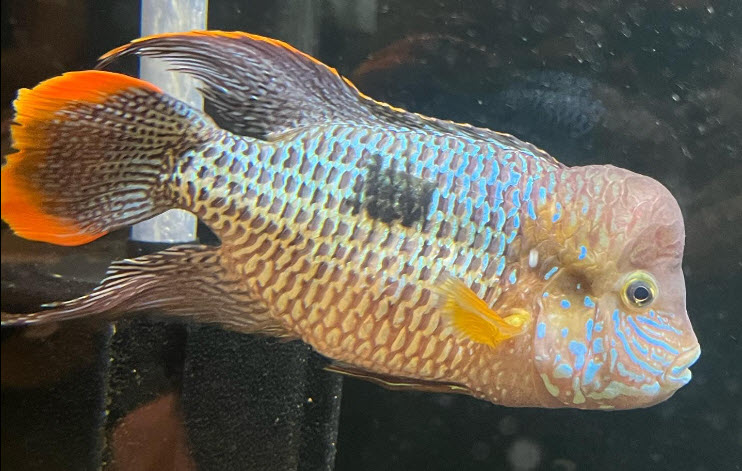
For a catfish, per the literature, the equation becomes:
- W = 0.0127 L3.28
A ten centimeter (four inch) catfish is thus 24 grams. But it moves slow and probably doesn’t need a metabolic factor, making its weight for feeding purposes only 24 grams.
Complicated enough for you?
This give one the weight of the fish in grams. If the fish is a juvenile multiply the weight by 0.03 to get the amount of food. If the fish is fully grown multiply by 0.015 to get the amount of food to feed. If the fish swims rapidly around the tank all day, multiply the numbers by two or even three. If the fish doesn’t move too much, do not multiply the numbers by anything (unless it is tall or wide bodied).
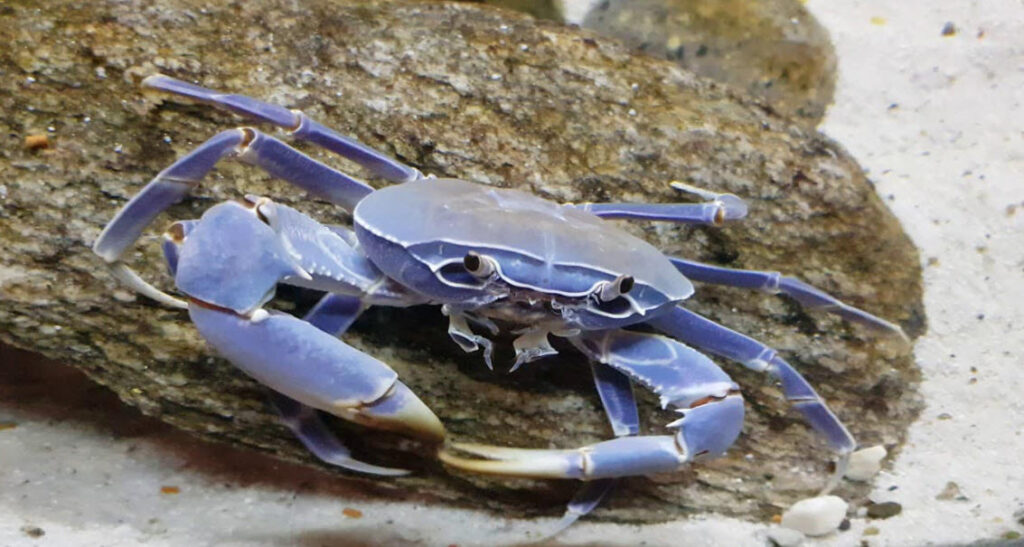
For the Ultimate Nerds
One of my readers tried my various methods of determining the weight of his fish and kept coming up with varying numbers. So he literally weighed his fish. He put a container of water on a scale and tared it. He then added four fish of any representative sample of his fish, like say four rams. He then divided the result by four to get the actual weight of the fish.
I love it! Only a fellow aquarium nerd would come up with this methodology. I folded his numbers into the numbers obtained in the literature for various fish in the article on stocking in depth.


